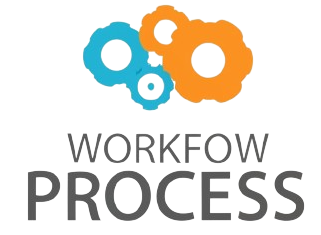Agents in AI represent one of the most fascinating and dynamic areas in artificial intelligence. At its core, an AI agent is an autonomous entity that perceives its environment through sensors and acts upon that environment using actuators in order to achieve specific goals. These agents are foundational to many modern technologies, from virtual assistants like Siri and Alexa to complex systems managing autonomous vehicles and robotic manufacturing lines. Understanding the concept of agents provides key insights into how AI systems operate, learn, and interact with their surroundings, enabling more intelligent and adaptive behaviors. This article will explore the fundamental concepts behind AI agents, their types, how they make decisions, and practical applications illustrating their real-world impact.
Understanding what makes an AI agent
At the heart of every AI system is the concept of an agent, defined as a system capable of perceiving its environment and taking actions to maximize its chances of success. For example, a robotic vacuum cleaner acts as an agent by continuously sensing dirt and floor layout and deciding where to move next to clean efficiently.
An AI agent typically consists of four components:
- Perception: Gathering information through inputs like sensors or data streams.
- Decision-making: Processing the gathered data using algorithms or rules.
- Action: Performing tasks that influence the environment.
- Learning (optional): Improving performance over time through experience.
For example, a self-driving car is an AI agent that constantly senses road conditions and traffic (perception), applies machine learning to predict the best route and maneuvers (decision-making), controls the steering and braking systems (action), and refines its algorithms from past driving data (learning).
Types of AI agents and their distinctions
AI agents can be categorized based on their complexity and capabilities:
| Agent type | Description | Example |
|---|---|---|
| Simple reflex agents | Operate solely on current percepts using condition-action rules without memory. | A thermostat regulating temperature based on sensed heat levels. |
| Model-based agents | Maintain an internal state to track past experiences for better decisions. | A chatbot that remembers prior user questions to provide context-aware answers. |
| Goal-based agents | Make decisions to achieve explicit goals, potentially planning actions ahead. | Autonomous drones that navigate obstacles to reach a delivery location. |
| Learning agents | Improve their performance by modifying behaviors based on past results. | Recommendation systems that refine suggestions from user feedback. |
Each type offers progressively more sophistication and autonomy, enabling more complex and adaptive behaviors in real-life scenarios.
How AI agents make decisions
Decision-making in AI agents involves interpreting current data and selecting the best course of action. This can be accomplished through several methods:
- Rule-based systems: Agents use predefined rules to respond to specific inputs. For instance, an email filter acts by checking keywords to classify spam.
- Search algorithms: Agents explore possible actions in environments to identify optimal outcomes, such as chess AI predicting moves.
- Machine learning models: Agents learn patterns from data to generalize decisions, like fraud detection systems analyzing transaction history.
To illustrate, consider a warehouse robot tasked with picking items efficiently. Using pathfinding algorithms (a form of search), it plans the shortest route among shelves, while machine learning helps it predict item demand and adjust restocking schedules.
Real-world applications showcasing AI agents
AI agents power many innovative technologies integral to daily life and industries. Here are some practical examples:
- Virtual personal assistants: Alexa and Google Assistant are learning agents that interpret voice commands, manage calendars, and control smart homes by adapting to user preferences.
- Autonomous vehicles: Companies like Tesla deploy goal-based and learning agents that constantly collect sensor data to navigate roads safely and improve with experience.
- Customer service bots: These model-based agents maintain conversation context and provide helpful responses, improving efficiency and customer satisfaction.
- Financial trading systems: Learning agents analyze market trends and execute trades autonomously to optimize investment strategies.
Each of these examples highlights how agents combine perception, decision-making, and action tailored to specific environments with varying levels of learning ability.
Conclusion
AI agents are essential pillars of modern artificial intelligence, embodying the capabilities of machines to perceive, decide, and act autonomously. From simple reflex systems like thermostats to highly adaptive learning agents in autonomous cars, these entities represent different layers of complexity and intelligence. Understanding their mechanisms—how they sense environments, make decisions via algorithms or learned knowledge, and apply actions—reveals why AI agents are so versatile across domains such as robotics, virtual assistants, autonomous vehicles, and automated trading. As AI research advances, agents continue to evolve, becoming smarter and more efficient, pushing the boundaries of automation and interaction. For anyone interested in AI, grasping the concept of agents is crucial to appreciating how intelligent systems function and impact our lives daily.
